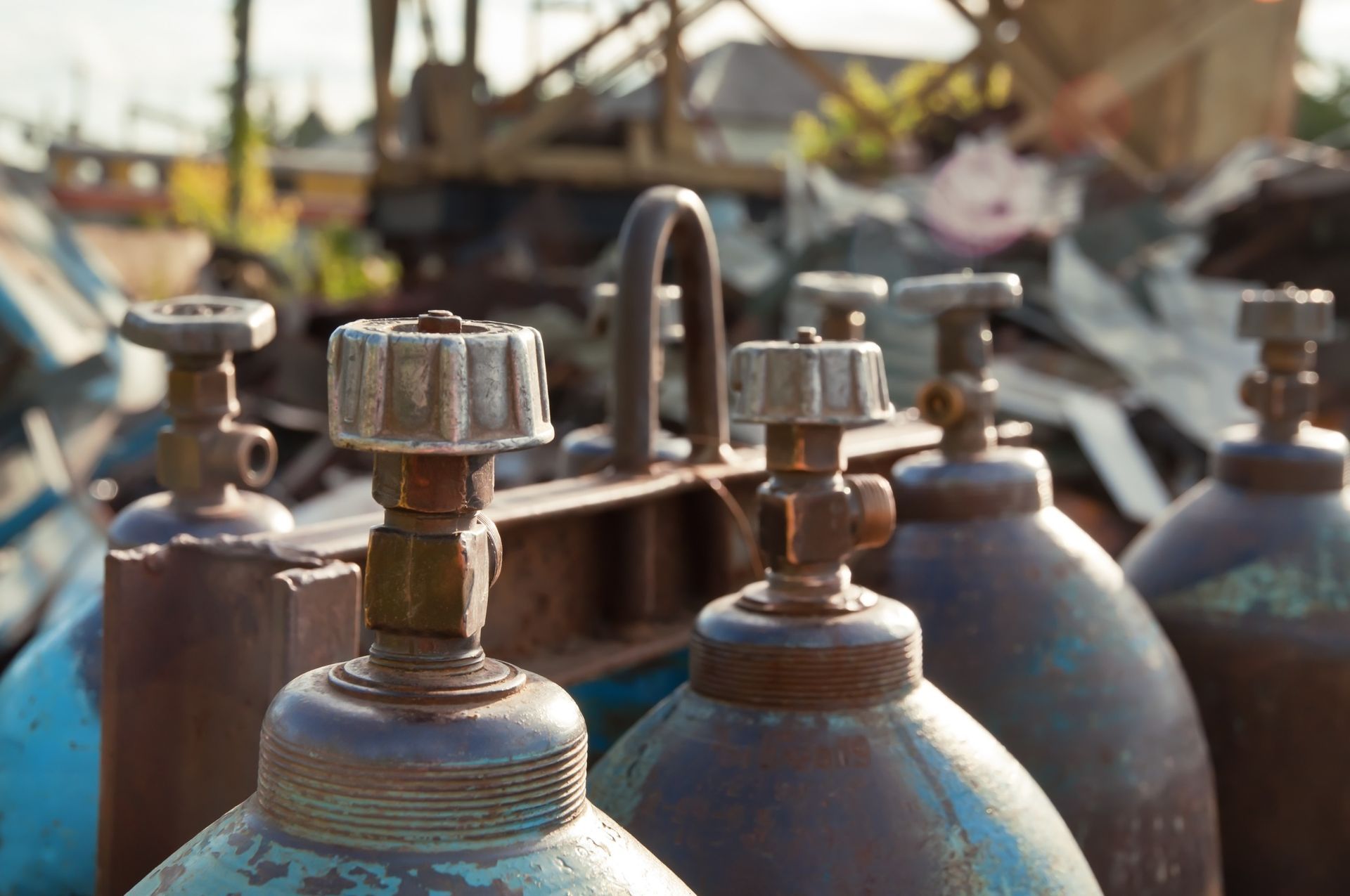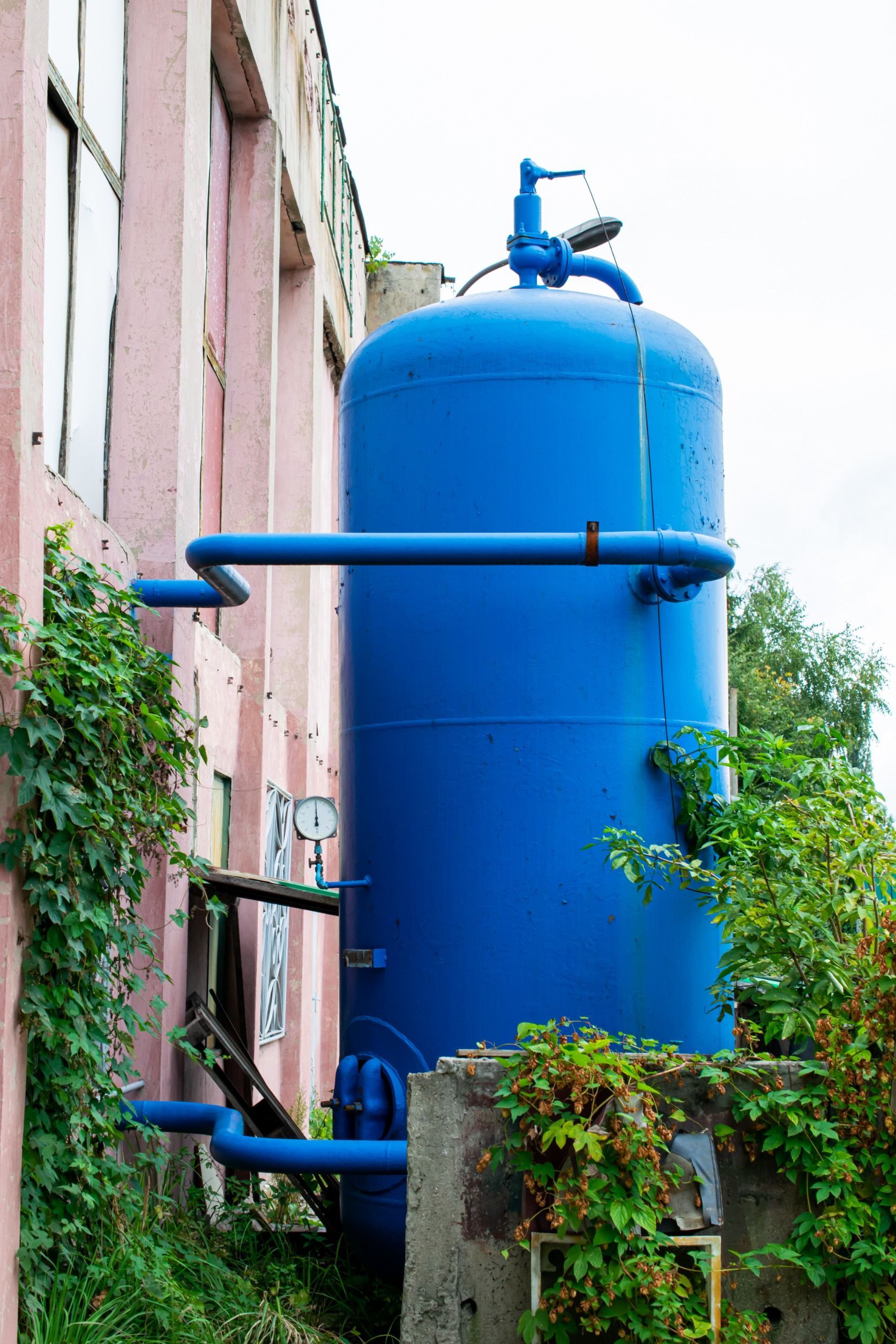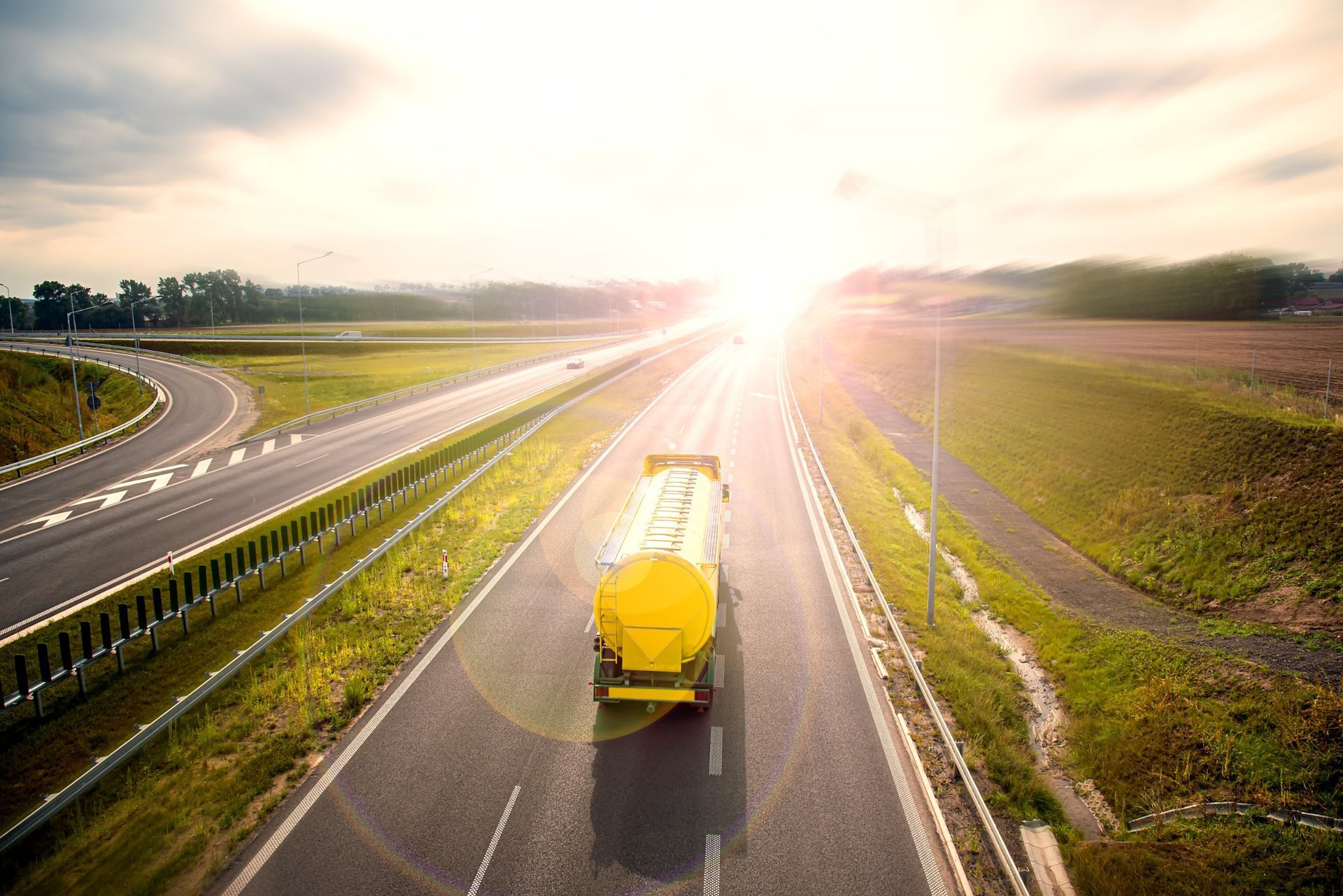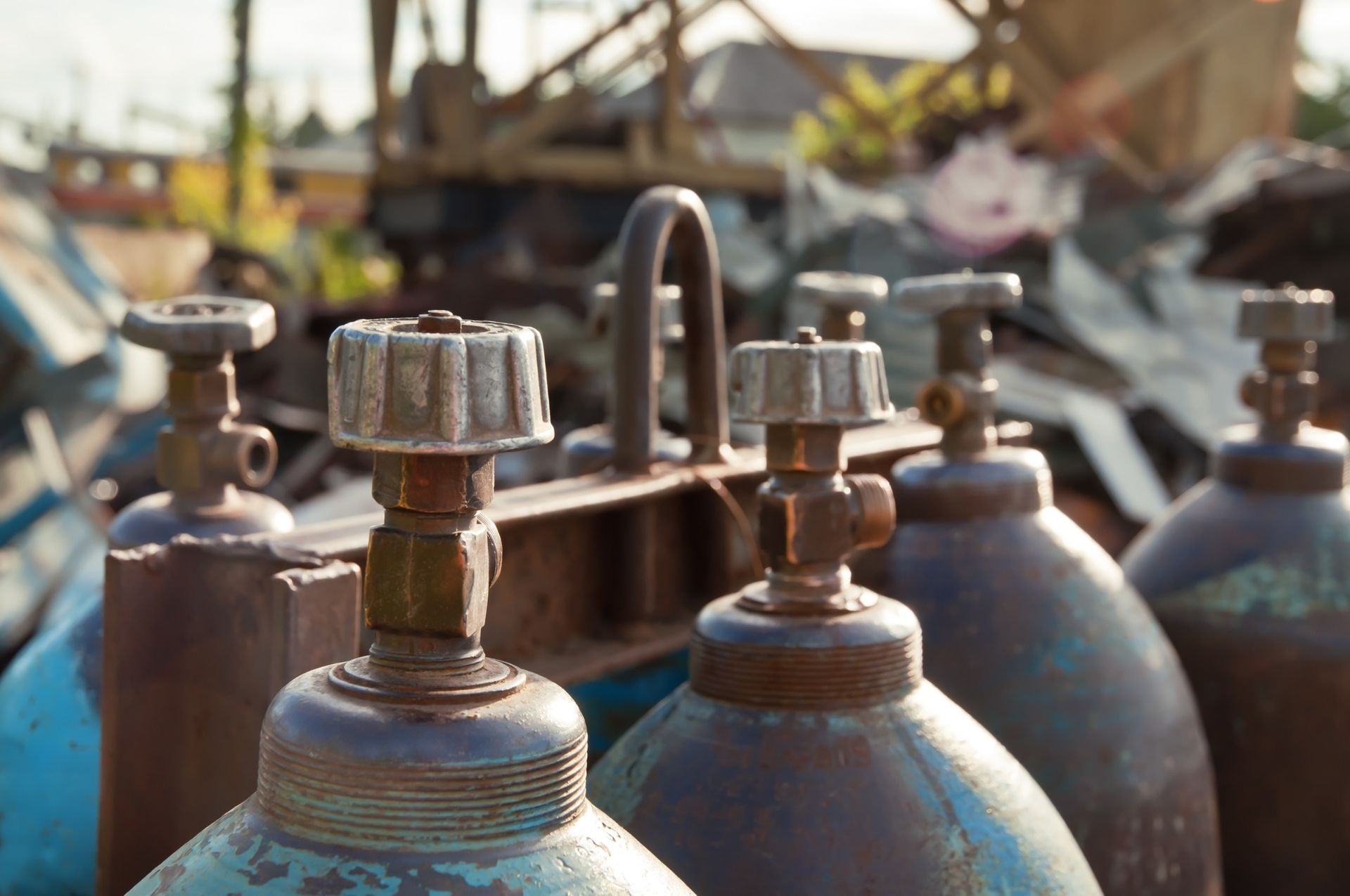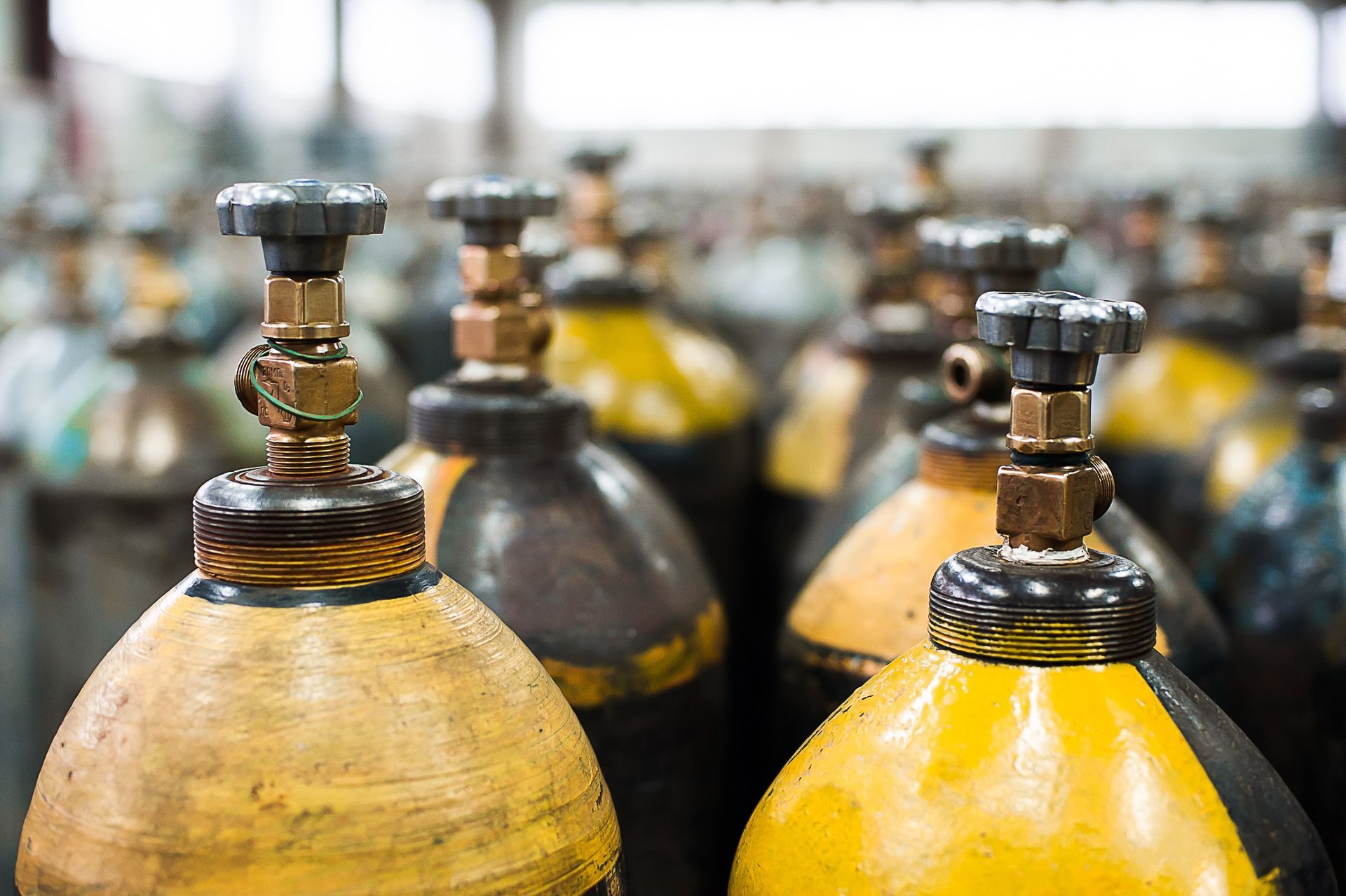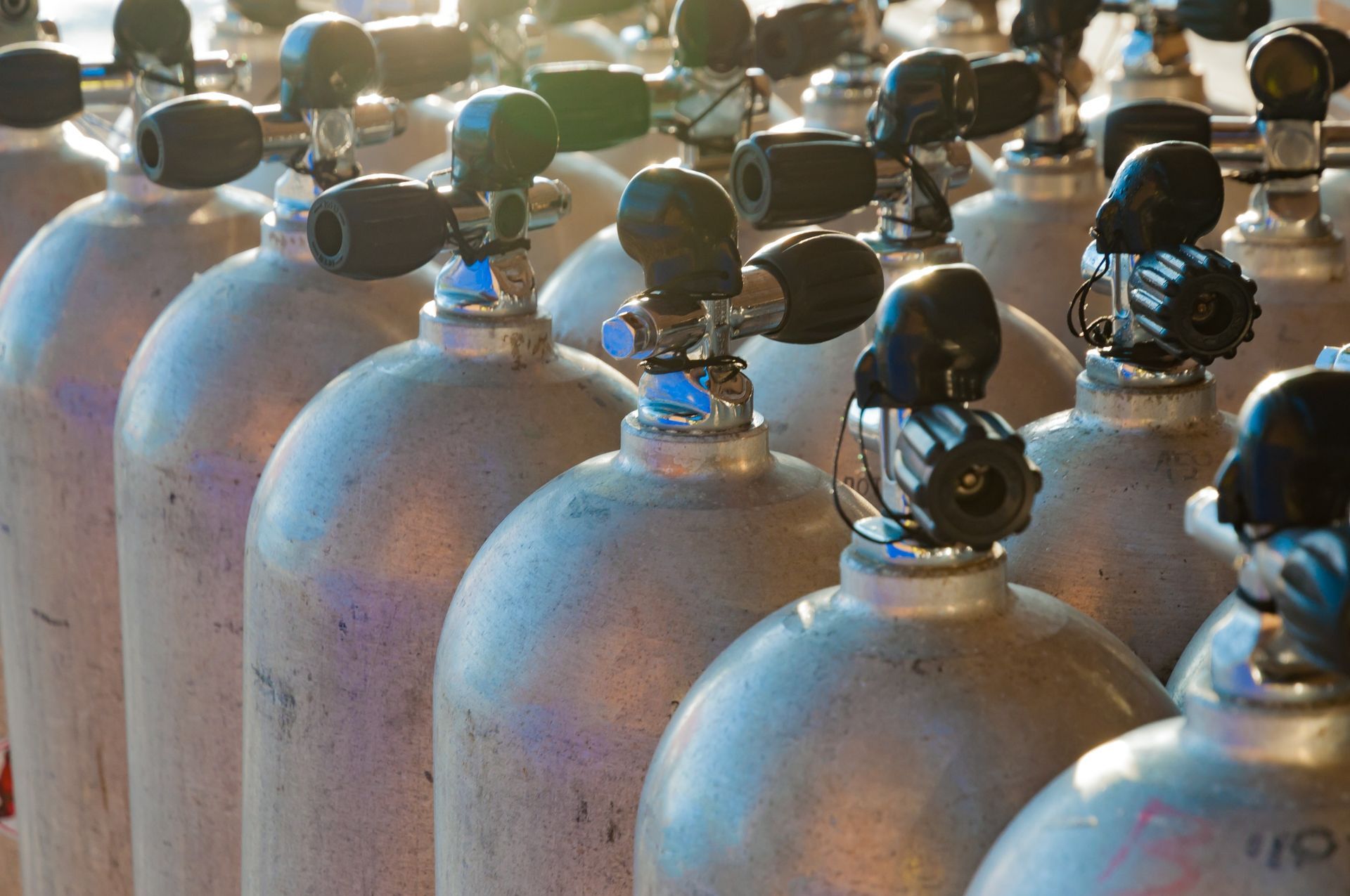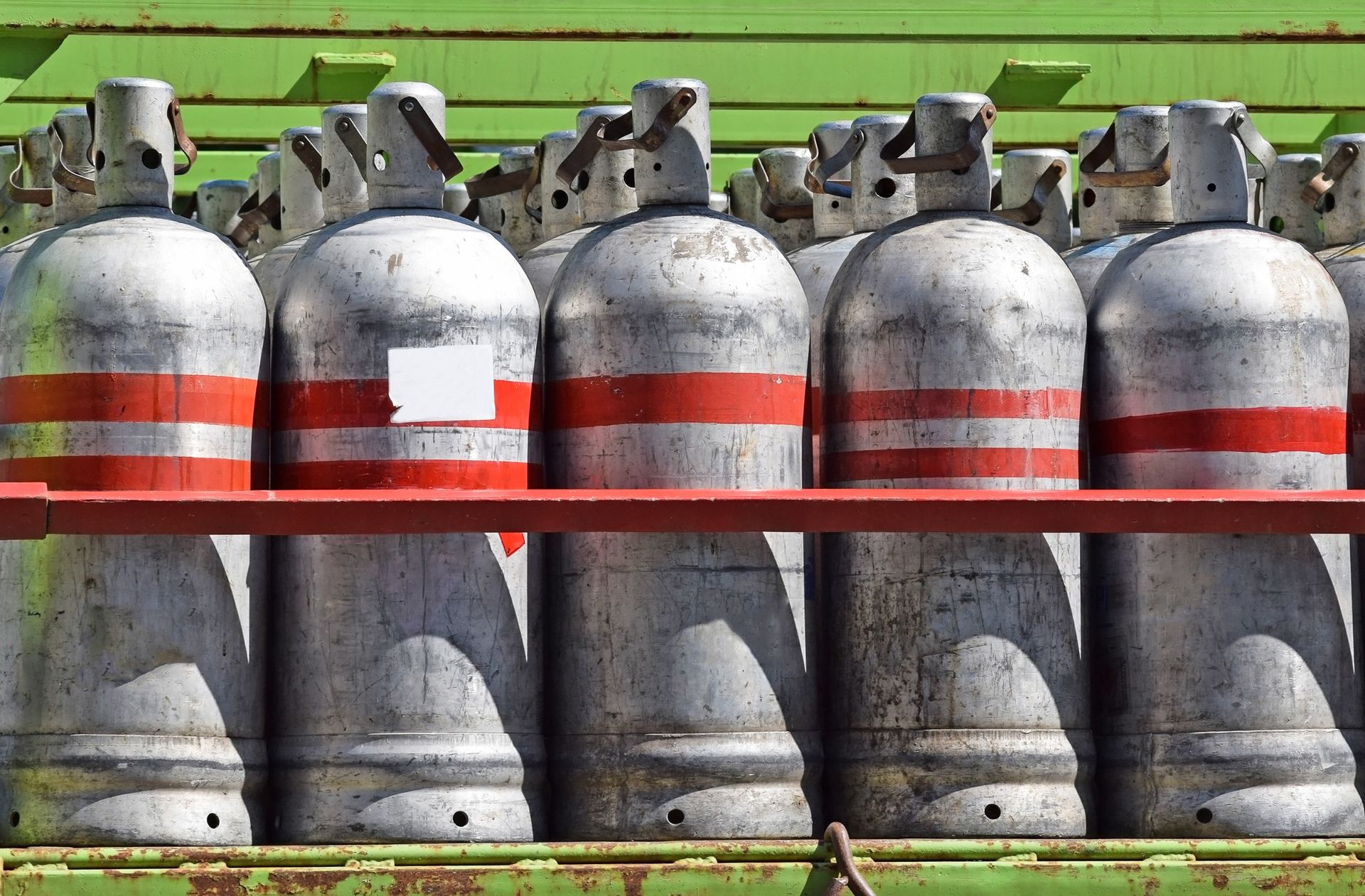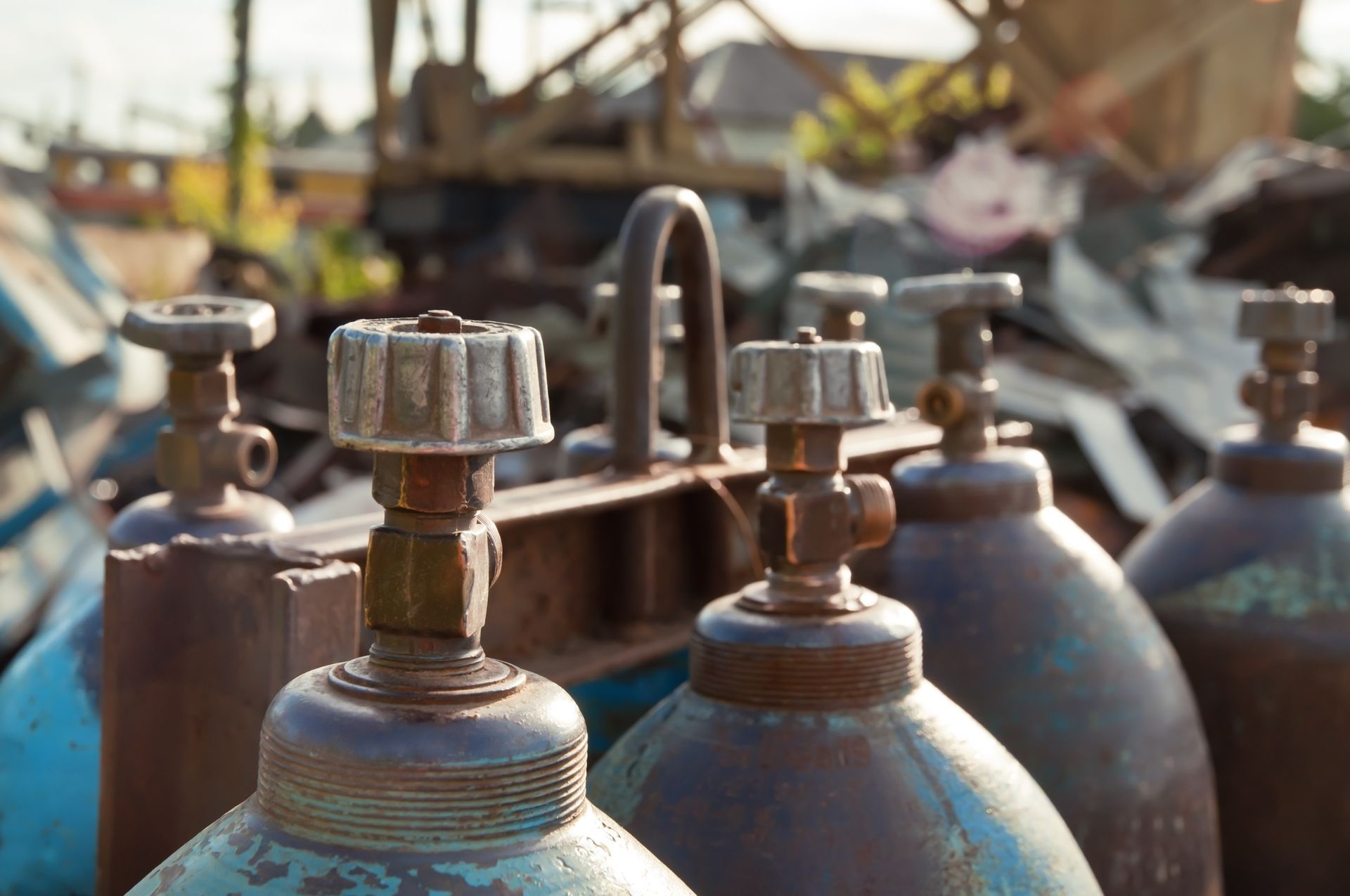The Importance of Quality Gas Cylinders for Industrial Applications: A Comprehensive Exploration
Ensuring Excellence in Safety and Efficiency: The Critical Role of High-Quality Gas Cylinders in Industrial Applications
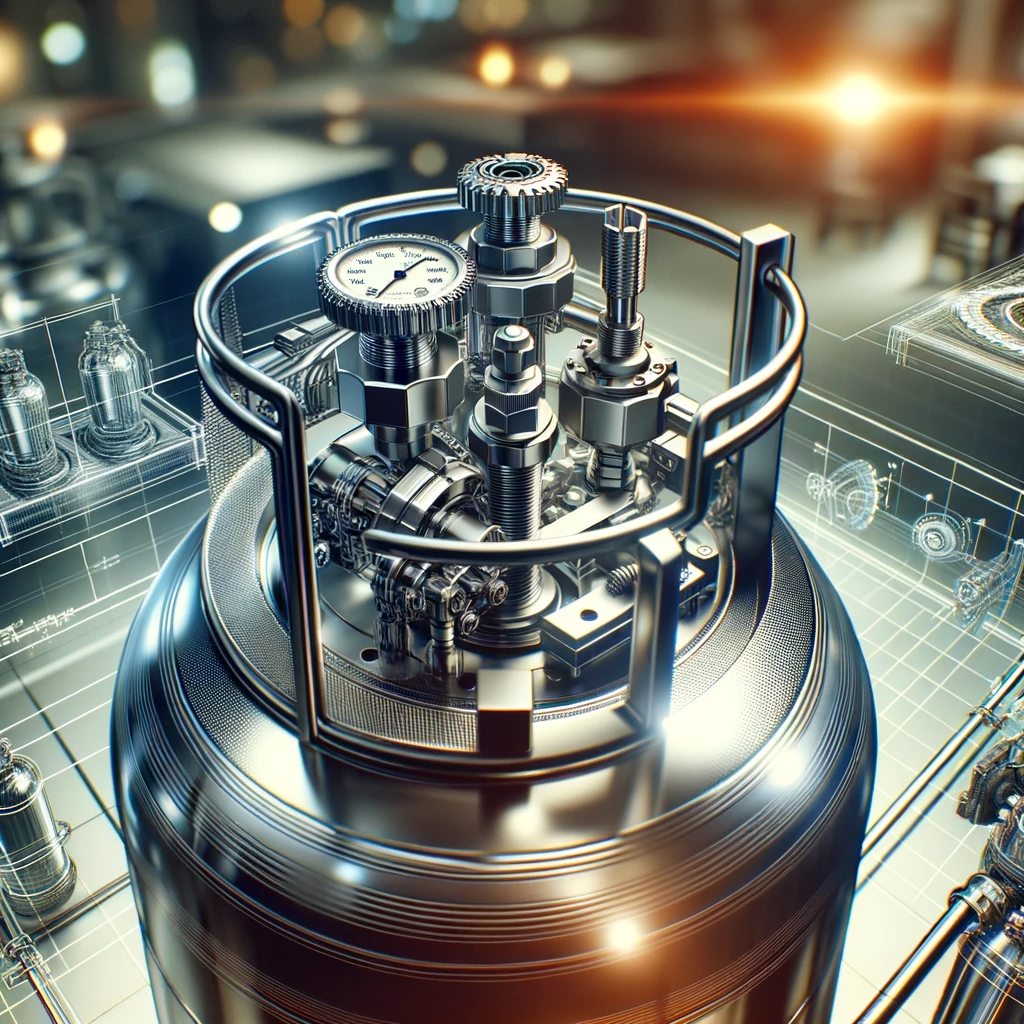
Introduction to Industrial Gas Cylinders
Gas cylinders are indispensable in various industrial settings, serving not just as containers, but as critical components ensuring operational safety and efficiency. This comprehensive exploration will delve into the myriad aspects of gas cylinders, highlighting their importance in a range of industrial applications.
Gas cylinders are pressurized containers specifically designed for the storage and transport of gases. Their utility spans a wide array of industries, each with unique requirements and challenges. Understanding the specifics of these cylinders is crucial to grasping their role in industrial safety and efficiency.
The history of gas cylinders is a chronicle of innovation and improvement. Early models, often cumbersome and unsafe, have given way to sophisticated, reliable, and safer designs. This evolution mirrors the advancements in material science and industrial safety protocols.
In addition to their fundamental role in storing and transporting gases, gas cylinders are also integral to the operational integrity of various industries. They serve as the backbone in sectors such as energy, manufacturing, healthcare, and research, where the safe and efficient handling of gases is non-negotiable. The design and maintenance of these cylinders are thus not just a matter of compliance with safety standards, but also a critical factor in the seamless operation of these industries.
Reliable gas cylinders ensure not only the safety of the workers and the environment but also contribute significantly to the efficiency and productivity of industrial operations. Their robustness, resistance to various environmental conditions, and adaptability to different types of gases make them an essential component in the complex machinery of modern industry.
Definition and Overview
Gas cylinders are pressurized containers specifically designed for the storage and transport of gases. Their utility spans a wide array of industries, each with unique requirements and challenges. Understanding the specifics of these cylinders is crucial to grasping their role in industrial safety and efficiency.
At their core, gas cylinders are built to house various types of gases under pressure, ranging from inert gases like nitrogen to flammable gases like acetylene. Their construction and design are dictated by the nature of the gas they contain, as well as by the conditions under which they will be used. This includes considerations for temperature extremes, potential chemical reactions, and the physical demands of transport and handling.
The versatility and adaptability of gas cylinders are key to their widespread use, making them indispensable tools in a broad spectrum of industrial, medical, and scientific applications. Beyond mere storage, these cylinders are engineered to ensure the safe delivery of gas at the required pressure and flow rate, a crucial aspect in processes ranging from industrial welding to medical oxygen delivery. As such, gas cylinders represent a convergence of safety, precision, and utility, tailored to meet the rigorous demands of diverse and often critical applications in modern industry.
Historical Evolution of Gas Cylinders
The history of gas cylinders is a chronicle of innovation and improvement. Early models, often cumbersome and unsafe, have given way to sophisticated, reliable, and safer designs. This evolution mirrors the advancements in material science and industrial safety protocols.
The journey of gas cylinders through history is marked by significant milestones that reflect both technological progress and a deepening understanding of material sciences. Initially, gas cylinders were simple metal containers with limited safety features, suitable only for low-pressure storage. As industrialization progressed, the need for higher-pressure containers became apparent, leading to the development of stronger and more resilient materials like reinforced steel.
The 20th century saw a major shift with the introduction of lighter materials such as aluminum, greatly enhancing portability and usability. Alongside material improvements, there were advancements in valve and regulator designs, dramatically increasing the safety and efficiency of gas storage and usage.
This progression from basic metal containers to today's high-tech cylinders encapsulates not just technological advances but also a growing commitment to safety, efficiency, and environmental consciousness in industrial practices. Each stage of this evolution was propelled by the emerging needs of industries and the relentless pursuit of safer, more efficient gas storage solutions.
Understanding Gas Cylinder Technology
Materials Used in Construction
The choice of material for a gas cylinder is critical. Steel and aluminum are common, but newer materials like composite fibers are emerging, offering superior strength and reduced weight. Each material brings its own set of properties, influencing the cylinder's performance and suitability for different gases.
Advancements in material technology have further expanded the options available for gas cylinder construction. High-strength alloys and advanced composites are now being utilized to create cylinders that are not only lighter but also capable of withstanding higher pressures and harsher environments.
These developments have opened new possibilities in industries where traditional metal cylinders were too heavy or prone to corrosion. For example, composite materials made with carbon fiber have seen increasing use, especially in applications requiring lightweight cylinders that can be easily transported, such as in aerospace or portable medical devices.
Additionally, the use of these advanced materials has led to improvements in the thermal properties of cylinders, making them more suitable for extreme temperatures and reducing the risk of gas expansion or contraction. These material innovations are a response to the growing demands of modern industries, ensuring that gas cylinders remain safe, reliable, and efficient in a wider range of applications and environments.
Design and Engineering Innovations
Modern gas cylinders embody cutting-edge design and engineering. Innovations such as lightweight, composite materials and smart features like telematics for tracking and monitoring are transforming how these cylinders are used and managed in industrial settings.
The relentless pursuit of improvement in gas cylinder design has also led to the integration of advanced safety mechanisms and ergonomic features. Engineers are continuously exploring ways to enhance the user interface of these cylinders, making them more intuitive and safer to operate. Innovations like built-in pressure relief valves, automatic shut-off systems, and tamper-proof seals have significantly reduced the risk of accidents and misuse.
Additionally, ergonomic considerations such as balanced weight distribution, easy-to-grip handles, and stable bases have made cylinders more user-friendly, reducing the physical strain on operators and enhancing overall workplace safety. These design enhancements are not just about adding features; they are a testament to a holistic approach that considers every aspect of the cylinder's use, from safety and functionality to user comfort and environmental impact.
As technology continues to advance, we can expect gas cylinders to become even more sophisticated, incorporating features like wireless connectivity for remote monitoring and diagnostics, further revolutionizing their role in various industrial applications.
Safety Protocols and Standards
International Safety Standards
Adherence to international safety standards is essential for ensuring uniform quality and safety of gas cylinders worldwide. These standards, set by organizations like the International Organization for Standardization (ISO), dictate the minimum requirements for materials, construction, testing, and maintenance of gas cylinders. Adherence to these standards ensures that cylinders are safe to use, can withstand the pressures and environments they are subjected to, and are consistent in quality and reliability worldwide.
The development and refinement of these international safety standards are an ongoing process, involving constant monitoring and incorporation of the latest scientific research, technological advancements, and lessons learned from past incidents. Standards such as ISO 9809 (for gas cylinders made of seamless steel) and ISO 7866 (for aluminum alloy cylinders) are regularly reviewed and updated to reflect new materials, design techniques, and safety considerations.
This dynamic process ensures that the standards remain relevant and effective in addressing the current challenges and risks associated with gas cylinder use. Furthermore, the harmonization of these standards across different countries and regions plays a crucial role in facilitating international trade and cooperation in industries that rely on gas cylinders. By setting a global benchmark for safety and quality, these standards help create a safer working environment and protect end users, irrespective of where the cylinders are manufactured or used.
Routine Inspection and Maintenance
Regular inspection and maintenance are key to prolonging the life of gas cylinders and ensuring their safe operation. This includes checks for corrosion, pressure integrity, and proper functioning of valves and safety devices. Consistent and thorough maintenance routines are essential for identifying potential issues before they become hazardous, ensuring that gas cylinders remain reliable and safe throughout their lifecycle.
Beyond standard checks, routine inspection and maintenance also involve detailed assessments of wear and tear, especially in environments where cylinders are exposed to harsh conditions like extreme temperatures, corrosive substances, or mechanical stress. This level of scrutiny helps in predicting and preventing failures, thereby safeguarding not only the contents of the cylinders but also the people and property around them.
Additionally, technological advancements have led to the development of sophisticated diagnostic tools that can detect flaws that are not visible to the naked eye, such as hairline cracks or internal corrosion. These tools, when used in regular maintenance routines, greatly enhance the safety and reliability of gas cylinders.
Furthermore, proper documentation and record-keeping of all inspections and maintenance activities are crucial for compliance with safety regulations and for providing a reliable history of each cylinder’s condition over time. This systematic approach to maintenance ensures that gas cylinders can be used confidently and safely, maximizing both their utility and lifespan.
The Role of Gas Cylinders in Various Industries
Healthcare and Medical Uses
In the healthcare industry, gas cylinders are critical for applications like oxygen therapy, anesthesia, and respiratory treatments. Their reliability and purity are vital for patient safety and effective treatment outcomes. These cylinders provide a controlled and precise delivery of medical gases, which is essential in a wide range of medical procedures and life-saving interventions.
Beyond these common uses, gas cylinders in healthcare also play a crucial role in areas like hyperbaric oxygen therapy, used for conditions such as carbon monoxide poisoning and wound healing, and in the storage and transport of cryogenic materials like liquid nitrogen. In medical laboratories, specialized gas cylinders are used for storing calibration gases for various analytical instruments. The stringent quality standards for these cylinders ensure that there is no contamination of the gases, which could otherwise lead to inaccurate diagnostic results or compromised patient care.
Additionally, the increasing use of portable gas cylinders has greatly enhanced the mobility of healthcare services, enabling medical professionals to provide care in remote locations and during emergency response situations. The design of these portable cylinders focuses on ease of transport and use while maintaining the highest safety standards, ensuring that patients receive reliable and effective care regardless of the setting.
Manufacturing and Construction Applications
Gas cylinders in manufacturing and construction play roles in welding, cutting, and as power sources for various tools and machinery. The quality of these cylinders directly affects the efficiency and safety of these operations. Their robust and versatile design makes them integral to a wide range of processes in these sectors, from small-scale workshops to large industrial projects.
In manufacturing, specialized gases stored in cylinders are used for processes like metal fabrication, where they aid in welding and cutting operations by providing a controlled environment that ensures the integrity and strength of the welds. In construction, these cylinders are essential for powering equipment used in building infrastructure, such as gas-powered nail guns and torches for roofing. The reliability of these cylinders underpins the productivity and progress in these industries, with their portability and ease of use enabling swift and efficient work.
Additionally, in more specialized manufacturing processes, such as in the chemical and pharmaceutical industries, gas cylinders are used to store and transport inert or reactive gases under strict safety conditions. These gases might be critical for creating controlled atmospheres for chemical reactions or for preserving the purity of sensitive products. The diversity of applications underscores the importance of precision in the design and manufacture of these cylinders, ensuring that they meet the specific needs of each application while maintaining the highest safety standards.
Environmental Considerations
Eco-friendly Practices in Production
The manufacturing of gas cylinders increasingly incorporates environmentally friendly practices. This includes reducing emissions during production, using sustainable materials, and implementing energy-efficient processes. These efforts are part of a broader industry trend towards sustainability, reflecting the growing awareness of environmental impact and the need for responsible manufacturing practices.
In addition to these measures, manufacturers are also exploring innovative production methods that have a lower environmental footprint. For instance, some are adopting recycling programs where old cylinders are refurbished or melted down to create new ones, significantly reducing the need for new raw materials and minimizing waste.
Others are investing in renewable energy sources, like solar or wind power, to run their manufacturing plants, further reducing their carbon footprint. There is also a growing focus on the entire lifecycle of the cylinder, with designs that are not only more efficient to produce but also easier to recycle at the end of their lifespan. This holistic approach to production not only helps in preserving the environment but also resonates with environmentally conscious consumers and companies, aligning with global efforts to combat climate change and promote sustainability in industrial practices.
Recycling and Disposal Methods
Proper recycling and disposal are crucial for minimizing the environmental impact of used gas cylinders. Innovative methods are being developed for safe decommissioning and recycling, reducing industrial waste, and promoting sustainability. This aspect of cylinder management is critical, as improper disposal can lead to environmental harm and safety risks.
The recycling process for gas cylinders often involves several steps to ensure safety and environmental compliance. First, cylinders are thoroughly cleaned, and any residual gases are safely removed. Then, depending on their condition and material, cylinders might be repurposed, refurbished, or completely recycled. Repurposing involves finding new uses for old cylinders, such as in construction or as containers for non-pressurized materials.
For cylinders that are no longer fit for any use, specialized facilities safely dismantle and segregate the materials for recycling. Metals like steel and aluminum can be melted down and reused, significantly reducing the need for virgin materials in new products. Additionally, research and development are ongoing to find more efficient and environmentally friendly methods for recycling composite materials, which are becoming more common in modern cylinder designs.
By focusing on sustainable disposal and recycling, the industry not only addresses environmental concerns but also adds value to what would otherwise be considered waste, contributing to a circular economy.
Quality Control in Gas Cylinder Manufacturing
Testing Methods for Reliability
Manufacturers employ rigorous testing methods to ensure cylinder reliability. This includes pressure tests, leak tests, and inspections for structural integrity, ensuring that each cylinder can safely contain and transport gases under various conditions. These tests are designed to simulate the extreme conditions the cylinders might encounter in real-world applications, providing assurance of their performance and safety.
In addition to these standard tests, advanced non-destructive testing (NDT) methods are increasingly being used to further ensure the reliability of gas cylinders. Techniques such as ultrasonic testing, radiographic testing, and magnetic particle inspection are employed to detect internal and external flaws that might not be visible to the naked eye.
These NDT methods are invaluable for identifying potential weak points or manufacturing defects in the cylinder walls, valves, and seams, which could compromise the cylinder's integrity under pressure. By employing these thorough and advanced testing methods, manufacturers can guarantee a higher level of safety and reliability for their cylinders. This not only enhances the trust in their products but also significantly reduces the risk of accidents and failures in various industrial, medical, and consumer applications where these cylinders are used. Such comprehensive testing protocols are a testament to the industry's commitment to safety and its continuous pursuit of excellence in product quality.
Certification Processes
Gas cylinders undergo strict certification processes to ensure they meet quality and safety standards. This includes compliance with national and international regulations, ensuring a standardized level of safety and performance. The certification process is rigorous and involves multiple stages of evaluation to certify that the cylinders are fit for use and meet all the required standards.
Beyond initial certifications, gas cylinders often undergo periodic re-certification processes throughout their operational lifespan. This is crucial as it ensures that cylinders continue to meet safety standards even after extended use. Re-certification typically involves inspections like the initial certification process, including checks for corrosion, pressure resistance, and overall structural integrity. It may also involve testing for any upgrades or changes in safety standards that have occurred since the cylinder was first certified.
This ongoing process of certification and re-certification is vital in maintaining the highest safety standards in the industry. It provides end users with confidence in the reliability and safety of the cylinders they rely on. Moreover, it helps manufacturers to maintain a reputation for quality and safety, which is essential in an industry where trust and reliability are paramount. These diligent practices in certification and ongoing oversight reflect the industry's commitment to upholding safety and quality above all else.
Innovations in Gas Cylinder Design
Smart Cylinder Technology
The integration of smart technology in gas cylinders, such as IoT (Internet of Things) connectivity and sensors, enables real-time monitoring of the cylinder's condition, including tracking gas levels, pressure, and potential leaks, enhancing safety and operational efficiency. These technological advancements represent a significant leap forward in the management and usability of gas cylinders.
Further advancements in smart cylinder technology are focusing on improving user interaction and predictive maintenance. Features like digital displays and mobile app connectivity provide users with instant access to data such as remaining gas volume, usage history, and even predictive analytics on when the cylinder might need refilling or maintenance. This level of interaction not only makes it easier to manage gas cylinders but also enhances safety by alerting users to potential issues before they become critical.
Predictive maintenance, facilitated by advanced algorithms that analyze usage patterns and performance data, can forecast potential failures, allowing for proactive maintenance, and reducing downtime. Additionally, integrating smart cylinders into broader IoT systems can optimize inventory management and logistics in industries where gas cylinders are used in large numbers, such as in manufacturing and healthcare. This integration allows for seamless tracking and automated reordering processes, ensuring that operations are not disrupted due to shortages or maintenance issues. These developments in smart cylinder technology are transforming how industries interact with and manage their gas cylinders, making them safer, more efficient, and more integrated into the digital landscape of modern business operations.
Future Trends in Cylinder Design
Emerging trends in gas cylinder design point to increased use of lightweight, high-strength materials, and further integration of digital technologies. These advancements will improve safety, efficiency, and user experience, reflecting the evolving needs of various industries relying on gas storage and transport.
Looking ahead, one of the key areas of innovation in cylinder design is the focus on sustainability. Designers and manufacturers are exploring ways to make cylinders more eco-friendly, from using recyclable materials to implementing manufacturing processes that have a lower environmental impact. In addition, there is a growing interest in developing modular cylinder systems, which can be easily adapted or expanded based on changing needs, providing greater flexibility, and reducing waste.
Another exciting development is the exploration of new shapes and ergonomic designs that make cylinders easier to handle and transport, particularly important in medical and consumer applications where ease of use is paramount. Moreover, the integration of advanced safety features, such as automatic pressure regulation and fail-safe mechanisms, is becoming more common. These features enhance the safety of gas cylinders, particularly in high-risk environments.
As industries continue to advance, the design of gas cylinders will likely become even more integrated with technology, potentially featuring advancements such as self-diagnosing cylinders that can report their status and automatically schedule maintenance or refilling, further streamlining operations and enhancing safety.
Cost Analysis of Quality Gas Cylinders
Initial Investment vs. Long-Term Benefits
Investing in high-quality gas cylinders may seem costly initially, but the long-term benefits in terms of safety, durability, and reduced maintenance costs make it a wise investment. This is particularly true in industries where safety and reliability are paramount. The initial cost should be viewed not just as a purchase expense but as an investment in long-term operational efficiency and safety.
The long-term benefits of choosing high-quality cylinders go beyond just avoiding accidents and maintenance costs. These cylinders often feature superior design and construction, which can lead to more efficient gas usage and storage, ultimately saving money on operational costs. For example, cylinders with better pressure retention and more accurate valves can reduce gas waste, providing cost savings over time.
Furthermore, high-quality cylinders usually have a longer lifespan, reducing the frequency of replacements needed and thereby offering better return on investment. In sectors where gas cylinders are a critical component, such as in medical or industrial applications, the reliability and consistent performance of these cylinders can significantly impact productivity and efficiency. Ultimately, the decision to invest more upfront in quality gas cylinders can lead to substantial savings and benefits in the long run, making it a strategically sound decision for businesses and operations.
Comparison of Various Brands and Models
When selecting gas cylinders, comparing different brands and models is crucial. Factors like material quality, safety features, and the brand's reputation for reliability should be considered to make an informed decision. This comparison helps users identify the best option that meets their specific requirements in terms of performance, durability, and cost-effectiveness.
In addition to these fundamental considerations, potential buyers should also evaluate the after-sales support and warranty terms offered by different manufacturers. Brands that provide comprehensive support, including easy access to spare parts, maintenance services, and customer support, can be more reliable choices in the long run.
Moreover, some brands specialize in specific types of cylinders, offering innovative features or specialized materials that may be particularly suited to certain applications or environments. For instance, some models are designed for extreme conditions, such as high-pressure or corrosive environments, and may offer enhanced safety features or materials specifically engineered for these challenges.
Capacity, ease of handling, and valve types are other crucial factors that can vary significantly between different models and can impact their suitability for certain tasks. By thoroughly evaluating and comparing these aspects, users can ensure that they choose gas cylinders that not only meet their immediate needs but also offer reliability and value over their entire lifespan.
Regulatory Landscape for Gas Cylinders
National and International Regulations
Gas cylinders are subject to a wide array of national and international regulations. Staying informed about these regulations is essential for manufacturers and users to ensure compliance and maintain safety standards. These regulations are designed to provide a uniform framework for the safe production, transportation, and use of gas cylinders, regardless of where they are made or used.
The complexity of these regulations can vary significantly from one country to another, and international harmonization efforts are ongoing to streamline these differences. This is particularly important in a globalized economy where gas cylinders are often manufactured in one country and used in another.
International agreements and standards, such as those set by the United Nations or the International Organization for Standardization (ISO), play a crucial role in this harmonization. They help ensure that cylinders meet a universally accepted level of safety and quality, facilitating international trade and cooperation.
Additionally, these regulations often include provisions for training and certification of personnel handling gas cylinders, ensuring that they are not only made and maintained according to high standards but also used safely and effectively. By complying with these national and international regulations, manufacturers and users of gas cylinders contribute to a safer industry and help prevent accidents and incidents that could have far-reaching consequences.
Impact of Regulation on Quality and Safety
Regulations play a critical role in driving quality and safety in the gas cylinder industry. They ensure that manufacturers adhere to strict standards, ultimately benefiting the end-users and enhancing industry-wide safety practices. These regulations are not static; they evolve in response to technological advancements, emerging risks, and lessons learned from industry incidents, continually pushing for higher standards.
The impact of these regulations extends beyond the manufacturing process into the entire lifecycle of gas cylinders. By setting standards for testing, inspection, and maintenance, regulations ensure that the cylinders remain safe to use throughout their operational life. This comprehensive approach reduces the likelihood of accidents caused by cylinder failure, which can have devastating consequences.
Furthermore, regulations often drive innovation as manufacturers seek to develop products that not only meet but exceed regulatory requirements. This leads to the creation of more advanced, efficient, and safer gas cylinders, as manufacturers invest in research and development to stay ahead of regulatory changes.
As a result, the entire industry benefits from improved products and heightened safety awareness. In this way, regulations act as a catalyst for progress, fostering a culture of continuous improvement and helping to maintain public trust in the safety and reliability of gas cylinders.
Case Studies: Industrial Accidents and Lessons Learned
Historical Industrial Accidents
Reviewing historical industrial accidents involving gas cylinders provides crucial insights into potential hazards and underscores the importance of strict adherence to safety standards and protocols. These incidents serve as stark reminders of the risks associated with the improper handling, storage, or manufacturing of gas cylinders.
Many of these historical accidents have been pivotal in shaping current safety regulations and manufacturing standards. For instance, incidents resulting from cylinder explosions due to overpressure have led to the development of more robust pressure relief mechanisms and regular pressure testing requirements. Accidents involving gas leaks and subsequent fires or explosions have prompted enhancements in valve design and the integration of more advanced leak detection systems.
These tragedies have also highlighted the need for better training and awareness among users and handlers of gas cylinders. They have spurred the creation of more comprehensive training programs and safety guidelines, emphasizing the critical nature of proper handling techniques, regular inspections, and adherence to safety protocols.
Moreover, these accidents have contributed to a broader understanding of the importance of safety culture in industrial settings, where safety is not just the responsibility of individual workers but is embedded in the organization's practices and values. The lessons learned from these historical accidents continue to inform and improve safety standards, driving the industry toward safer practices and technologies.
Preventative Measures Post-Accidents
These case studies emphasize the need for robust safety measures, including regular inspections, adherence to usage guidelines, and continuous employee training, to prevent similar incidents in the future. The implementation of these preventative measures is vital for creating a safer working environment and mitigating risks associated with gas cylinders.
In addition to established safety protocols, there has been a growing emphasis on the adoption of advanced technological solutions as part of post-accident preventative measures. This includes the use of automated monitoring systems that continuously track the condition of gas cylinders and alert users to potential issues before they escalate into serious problems.
Developments in sensor technology enable real-time monitoring of factors such as pressure, temperature, and gas composition, providing an additional layer of safety. Furthermore, the integration of these systems into broader safety management platforms allows for the collection and analysis of data across multiple cylinders and sites, identifying trends and potential areas of concern that might not be obvious at an individual level.
These technological advancements, combined with traditional safety practices, enhance the overall safety management of gas cylinders, making it possible to proactively address risks and prevent accidents. By learning from past incidents and embracing both technological and procedural improvements, industries can significantly improve the safety and reliability of their operations involving gas cylinders.
End-User Perspectives on Gas Cylinder Quality
Surveys and Feedback from Industry Professionals
Gathering feedback from industry professionals who use these cylinders daily offers valuable insights into their practicality, performance, and areas for improvement. This feedback is crucial for manufacturers to enhance their products and services, ensuring they meet the evolving needs of their users.
The value of this feedback extends beyond product improvement. It also provides insights into the effectiveness of training programs and safety protocols. For example, feedback might reveal common misconceptions or procedural gaps that could lead to unsafe practices. Addressing these through targeted training or clearer instructions can significantly improve safety outcomes.
Additionally, this feedback often highlights the real-world challenges faced by users, such as issues with cylinder portability or compatibility with other equipment. Addressing these usability concerns can lead to design innovations that make gas cylinders more user-friendly and efficient to use. This ongoing dialogue between manufacturers and users helps foster a culture of continuous improvement and safety in the industry. It ensures that gas cylinders not only comply with technical and safety standards but also align with the practical needs and preferences of those who rely on them in their daily operations.
Case Studies of Success and Failure
Analyzing both successful applications and failures of gas cylinders in various industries provides a comprehensive understanding of the impact of quality on safety and efficiency. These case studies are invaluable in guiding future improvements and innovations.
Success stories often highlight how the integration of high-quality cylinders has led to enhanced safety and operational efficiency. These successes can be seen in sectors where the reliability of gas cylinders is critical, such as in emergency medical services, where the timely and safe delivery of medical gases can be lifesaving. On the other hand, case studies of failures often reveal overlooked risks or underestimated factors, such as the impact of environmental conditions on cylinder integrity or the consequences of inadequate maintenance.
Learning from these failures is crucial for the industry to develop more resilient and safer products. For example, a failure analysis might lead to the development of cylinders with improved corrosion resistance for use in harsh environments, or to the implementation of smarter monitoring systems that can predict and prevent failures.
These case studies, both of successes and failures, serve as a valuable resource for continuous learning and improvement, driving the industry towards safer practices and more innovative solutions. They highlight the importance of not only adhering to standards but also striving for excellence in design, manufacturing, and maintenance of gas cylinders.
Future of Gas Cylinders in Industry
Emerging Technologies and Materials
The future of gas cylinders in industry looks promising with the advent of new technologies and materials. These advancements are expected to bring about more efficient, safer, and environmentally friendly cylinders, reflecting the dynamic needs of modern industrial applications.
One of the most exciting developments in this area is the exploration of new material composites that offer greater strength while significantly reducing weight. These materials, such as advanced carbon fiber composites, are not only lighter but also show increased resistance to corrosion and wear, which can extend the lifespan of the cylinders and improve safety.
Additionally, technological innovations are focusing on improving the functionality of gas cylinders. This includes the development of self-healing materials that can repair minor damages automatically, reducing the need for frequent maintenance and enhancing the overall reliability of the cylinders. Another area of focus is the enhancement of thermal insulation properties, which is particularly important for cylinders used to store and transport cryogenic gases.
Improved insulation can maintain the temperature and pressure stability of these gases, increasing efficiency and safety. These emerging technologies and materials are set to revolutionize the design and use of gas cylinders, making them more adaptable, durable, and suitable for a wider range of applications while also addressing environmental concerns and the growing demand for sustainable solutions.
Predictions for the Next Decade
The next decade is likely to witness significant strides in gas cylinder technology, with a focus on sustainability, user safety, and integration with digital technologies. This evolution will be driven by the continuous pursuit of better, safer, and more efficient industrial solutions.
In addition to these trends, the next decade may also see a rise in the customization of gas cylinders to meet specific industry needs. This could involve designing cylinders with unique features for niche applications, like ultra-lightweight models for space exploration or highly resistant types for deep-sea operations. Advances in manufacturing technologies, such as 3D printing, could play a pivotal role in this, allowing for more cost-effective customization while maintaining high safety standards.
Furthermore, the integration of artificial intelligence (AI) and machine learning could lead to smarter gas cylinders capable of self-diagnosis, predicting their own maintenance needs, and even autonomously adjusting their performance to optimize gas usage and safety. Such intelligent systems could significantly reduce operational risks and improve efficiency.
These predictive analytics and AI integrations would not only revolutionize how gas cylinders are monitored and maintained but also enhance their role within the broader framework of smart industrial operations. As these technologies mature, we can expect gas cylinders to become increasingly interconnected components of the industrial Internet of Things (IoT), offering unprecedented levels of control, safety, and efficiency in their use.
The Importance of Quality Gas Cylinders for Industrial Applications
The importance of quality gas cylinders in industrial applications cannot be overstated. These cylinders play a crucial role in ensuring operational safety, efficiency, and compliance with environmental and regulatory standards. Their quality directly impacts the reliability and safety of numerous industrial processes, making them an indispensable component in various sectors.
High-quality gas cylinders are not just about meeting the minimum safety requirements; they are about exceeding expectations to ensure maximum reliability and efficiency. In industries where gases are used under high pressure or in critical processes, such as in chemical manufacturing or in the aerospace sector, the integrity of a gas cylinder can be the difference between smooth operation and catastrophic failure. Quality cylinders are designed to withstand rigorous use, resist environmental stresses, and maintain their performance over time, reducing the risk of leaks, explosions, or other hazardous incidents.
Additionally, as industries increasingly move towards automation and precision manufacturing, the consistency and reliability offered by high-quality gas cylinders become even more critical. They enable accurate and controlled delivery of gases, which is essential for processes requiring exacting standards. In this way, investing in quality gas cylinders is not just a safety measure; it is a strategic decision that can enhance the overall productivity and competitiveness of industrial operations.
FAQ's
- What are the main materials used in gas cylinder construction?
- The primary materials used in the construction of gas cylinders are steel and aluminum, due to their strength and ability to withstand high pressures. In recent years, composite materials like carbon fiber have also been used, offering advantages such as lighter weight and increased corrosion resistance. The choice of material depends on the specific requirements of the application, such as the type of gas being stored, the required pressure, and environmental factors.
- How do international safety standards impact gas cylinder design?
- International safety standards significantly influence the design of gas cylinders. These standards, set by organizations like the International Organization for Standardization (ISO), dictate the minimum requirements for materials, construction, testing, and maintenance of gas cylinders. Adherence to these standards ensures that cylinders are safe to use, can withstand the pressures and environments they are subjected to, and are consistent in quality and reliability worldwide.
- What role do gas cylinders play in the healthcare industry?
- In the healthcare industry, gas cylinders are vital for various applications. They are used to store and transport medical gases such as oxygen, nitrous oxide (for anesthesia), and air (for respiratory therapy). These cylinders provide a reliable and safe source of medical gases essential for patient care in hospitals, ambulances, and home healthcare settings. The quality and purity of the gases, as well as the reliability of the cylinders, are crucial for patient safety and effective treatment.
- How does smart technology enhance gas cylinder safety?
- Smart technology enhances gas cylinder safety by incorporating features like sensors and IoT (Internet of Things) connectivity. These technologies allow for real-time monitoring of the cylinder's condition, including tracking gas levels, pressure, and potential leaks. Smart cylinders can also provide alerts for refills, maintenance needs, and detect abnormal conditions, thereby significantly reducing the risk of accidents and improving operational efficiency.
- What are the environmental considerations in gas cylinder manufacturing and disposal?
- Environmental considerations in the manufacturing and disposal of gas cylinders include minimizing the ecological footprint during production, such as reducing emissions and energy consumption. Additionally, at the end of their life cycle, proper recycling and disposal of gas cylinders are crucial. This involves safely decommissioning cylinders, recovering and recycling materials where possible, and ensuring that any residual gases are handled in an environmentally friendly manner.
- How does quality control in manufacturing impact gas cylinder reliability?
- Quality control in the manufacturing of gas cylinders is essential for ensuring their reliability and safety. This involves stringent testing for leaks, pressure resistance, and structural integrity, adherence to material specifications, and ensuring that valves and other components function correctly. Regular quality checks throughout the manufacturing process ensure that the cylinders meet the required safety standards and are fit for their intended industrial use. Good quality control practices result in cylinders that are reliable, safe, and have a longer lifespan, thereby reducing the risk of accidents and ensuring consistent performance.
Conclusion
In summary, the importance of quality gas cylinders in industrial applications encompasses a broad spectrum of considerations, from safety and efficiency to environmental impact and regulatory compliance. As the industry continues to evolve, the role of these cylinders will become increasingly vital, driving innovation, and setting new benchmarks in industrial safety and efficiency.
Ready to work with Metro Welding Supply Corp.?
Let's connect! We’re here to help.
Send us a message and we’ll be in touch.
Or give us a call today at 313-450-9300
Agency Contact Form
We will get back to you as soon as possible
Please try again later
More Industry Tips, Tricks & Tools...
Industry Insights (i2)
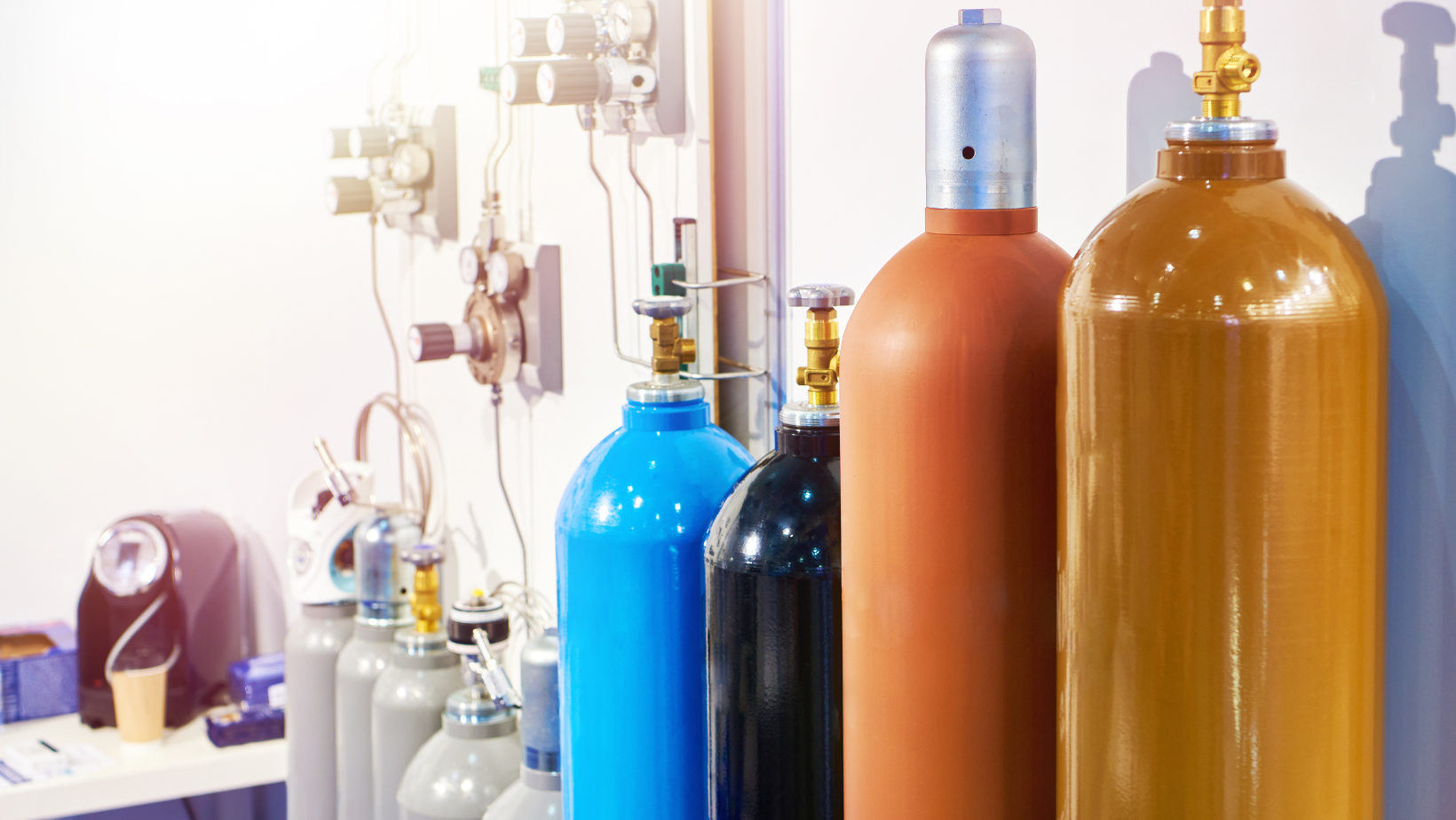
Note: Always adhere to industry-specific safety guidelines and consult with professionals for proper handling, storage, and usage of pressurized gases.
Menu
All Rights Reserved. Designed By Lead Monkey Marketing LLC

